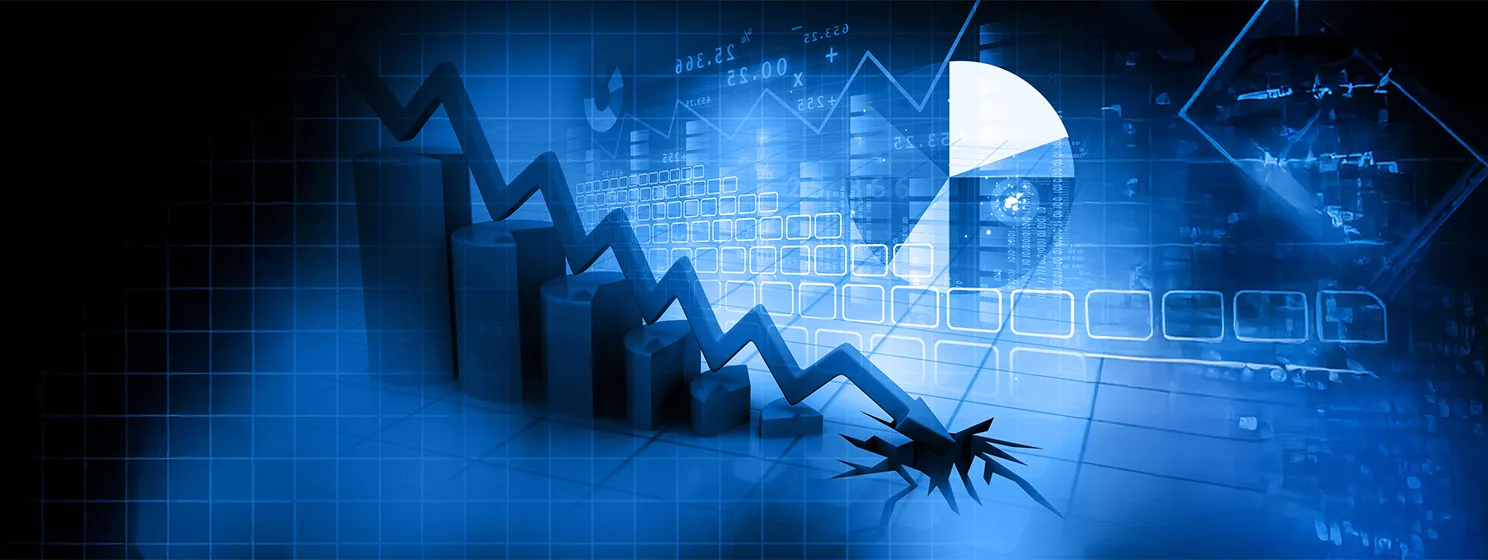|
Getting your Trinity Audio player ready...
|
BTC block reward miners continue to struggle to turn a profit, but AI’s new interest in nuclear power might offer a solution to miners’ insatiable electricity demands.
September’s BTC mining revenue and profits were lower than the sector reported in August, according to Jefferies Group analysts, with revenue having its lousiest month so far this year. Worse, Jefferies expects this trend to continue in October as mining difficulty shows little sign of easing.
Currently, the average price to mine a single BTC token has topped US$80,000, while BTC’s fiat price is around $67,000. BTC’s fiat price enjoyed a healthy gain in October, but the network’s difficulty is rising at twice that rate. Small wonder that miners continue to ‘pivot’ to more profitable activities, including serving as data centers for AI and other high-performance computing (HPC) tasks.
Other miners are sidestepping the actual work of competing for block rewards in favor of taking on debt to just buy BTC. They’re trying to follow the path laid down by MicroStrategy (NASDAQ: MSTR), which has enjoyed a stock price surge this year based on the roughly 245,000 BTC on its balance sheet.
That’s all fine and well. Right up until the moment, it isn’t. Years ago, The Simpsons previewed the likely fate of BTC HODL’ers who refuse to see the potential downsides of investing in utility-free digital Beanie Babies. Remember, kids: you can’t say you weren’t warned.
Anyway, here’s a glance at how some of the most prominent publicly-traded BTC miners fared in September, in descending order of magnitude:
- MARA (NASDAQ: MARA), formerly Marathon Digital, mined 705 BTC in September, up 5% from August, thanks to a 5% increase in its energized hash rate. MARA didn’t sell a single BTC in September, which is part of its new HODL strategy. However, MARA recently collateralized some of its nearly 27,000 BTC to secure another $200 million line of credit, some of which will undoubtedly be used to buy yet more BTC after buying 4,144 tokens in August.
- CleanSpark (NASDAQ: CLSK) mined 493 BTC in September, up modestly from 478 in August. CleanSpark sold just 2.5 BTC in September, leaving it with 8,049 on its balance sheet.
- Riot Platforms (NASDAQ: RIOT) produced 412 BTC in September, up from 322 in August, thanks to a 35% rise in its hash rate. Like MARA, Riot is no longer selling its BTC, convinced that ‘number go up’ is a one-way street, leaving it with 10,427 BTC on its balance sheet.
- Iris Energy (NASDAQ: IREN) produced 347 BTC in September, 102 more than it mined in August, as its hash rate more than doubled. While mining remains Iris’s bread and butter, its growing AI cloud operations are projected to represent 10% of its overall earnings by year’s end.
- Core Scientific (NASDAQ: CORZ) bucked this upward trend, mining 345 BTC in September, down from 358 in August, thanks to reconfiguring some of its facilities to focus on AI/HPC operations. Similarly bucking the HODL’ing trend, Core sold 370 BTC in September, five fewer than in August.
- Bitfarms (NASDAQ: BITF) collected 217 BTC in September, down from 233 in August, despite no change in hash rate (just unlucky, we guess). Also, no HODL’ing here, as Bitfarms sold 173 BTC in September after selling 147 in August.
- TeraWulf (NASDAQ: WULF) mined 176 BTC in September, down from August’s 184.
- Bitmain spinoff Bitdeer (NASDAQ: BTDR) produced 164 BTC in September, basically flat month-on-month, but the company assured investors that newer, faster, better mining rigs are being installed as we speak.
- Cipher Mining (NASDAQ: CIFR) generated 155 BTC in September, five fewer than in August, despite its mining rig count increasing by nearly 3%. And Cipher sold a whopping 923 BTC last month, leaving it with only 1,512 tokens on its balance sheet. The sell-off helped fund the acquisition of a new facility that will serve as an HPC data center, not BTC mining.
- Hut 8 (NASDAQ: HUT) produced 85 BTC in September, which was basically flat from August, while its balance sheet lists a total of 9,106 tokens.
While the above companies offer snapshots of the electricity costs of running their thousands of mining rigs across multiple facilities, we generally have to wait for their quarterly earnings reports to see the full cost of production. This includes the requirement to amortize and eventually upgrade their technology to keep abreast of rivals, as Bitfarms’ case above amply demonstrates.
To pivot or not to pivot
Between the unforgiving mathematics of BTC mining and fickle investors turning their attention from ‘crypto’ to AI, miners’ press releases are increasingly downplaying mining operations in favor of their AI/HPC opportunities.
Earlier this month, Riot Platforms CEO Jason Les told Bernstein analysts that his company “would be very interested” in a deal like the multi-billion-dollar pact struck this summer between Core Scientific and ‘AI Hyperscaler’ CoreWeave, the Nvidia (NASDAQ: NVDA)-supported cloud platform.
That deal will see Core Scientific provide CoreWeave with additional computing infrastructure, which, building on an existing deal between the two parties, will generate $6.7 billion in revenue for Core Scientific over a 12-year period. Not bad, considering Core Scientific was still mired in bankruptcy proceedings when this year began.
Riot’s Les said his company wasn’t about to announce “a pivot [to AI] just for the sake of it,” but Les wanted investors to know that “Riot has valuable assets and we have received inbounds about those.” However, Riot has historically “focused on [BTC] mining,” and the company intends to “remain focused on that strategy.”
Riot may be content to dance with the one that brought it, but other operators can’t pivot fast enough. Some of these pivots appear to be based on the fact that the stock prices of miners making the most AI/HPC noise are performing better than their BTC-focused rivals.
Regardless of their focus, a rich-get-richer mindset prevails, with every week bringing miner press releases detailing acquisitions of smaller mining operators who can no longer compete with the big boys. Coupled with other miners switching their focus to AI, the ranks of BTC miners will continue to thin, with dangerous implications for the security of BTC’s proof-of-work consensus mechanism.
Have you got gas?
Depending on which surveys you read, America currently accounts for between 35-38% of the global BTC hash rate, more than the combined share of the next two—and possibly three—leading countries (Kazakhstan, Russia, and Canada). However, miners’ insatiable appetite for electricity continues to create friction regardless of the jurisdiction in which they operate.
Debates rage over how much of America’s electrical capacity miners are devouring (federal agencies have said it’s as high as 2.3% of the total pie). But even the kindest estimates represent not-insignificant chunks of power that could be devoted to more productive purposes than financial speculation benefiting a handful of BTC whales.
Between growing public antipathy towards miners and cash-rich AI firms willing to outbid miners for grid capacity, miners are getting increasingly creative and/or desperate. MARA recently began using excess natural gas from America’s shale oil producers to power localized miniature versions of its data centers. Effectively, MARA is generating its own power to fuel its mining operations.
MARA CEO Fred Thiel told Reuters that the pilot program is a partnership with NGON Solutions, which specializes in ‘natural gas onsite neutralization.’ Since the gas—a byproduct of oil production—would otherwise be ‘flared’ aka burned off, MARA also stands to earn government carbon credits.
Smaller miners have engaged in such schemes before, but MARA is believed to be the first publicly traded miner to test these waters. Thiel said the idea is to “avoid putting additional load on the grid,” but it’s also a reflection of the fact that “the AI guys are prepared to pay almost any price for energy because of their demand, so it makes it very hard for [BTC] miners to be able to compete.”
Nuke ’em
In keeping with the current power dynamic, AI looked at MARA’s gas plan and said, ‘Hold my beer.’ Last month, Microsoft (NASDAQ: MSFT) announced a deal with Constellation Energy to relaunch Pennsylvania’s controversial Three Mile Island nuclear power plant to fuel Microsoft’s AI data centers.
In 1979, Three Mile Island became infamous after experiencing a partial nuclear meltdown of one of its reactors. While some of the plant’s operations remained viable, its operators pulled the plug for good in 2019. Or so they thought. The Unit 1 reactor is now slated to be restarted in 2028, assuming regulatory approval can be obtained.
With that taboo broken, Google (NASDAQ: GOOGL) just announced a deal with Kairos Power, a builder of small modular reactors (SMR), to power Google’s AI operations. The plan calls for the first SMR to be online “quickly and safely” by 2030, providing up to 500Mw of “new 24/7 carbon-free power” by 2035.
Not to be outdone, Amazon (NASDAQ: AMZN) announced an investment in SMR developer X-energy, as well as deals with public utility consortium Energy Northwest and private utility Dominion Energy to deploy SMRs to bolster regional electricity grids.
Naturally, BTC miners are now kicking SMR’s tires to see if nuclear power might help solve their electricity issues. However, it will require significant upfront investment, meaning SMR will be an option only for the largest miners, and the competitive edge that this might offer could accelerate the already problematic concentration of hash rate.
But hey, look on the bright side. The few remaining mining giants will eventually ‘pivot to AI’ because it’s more profitable, and with the smaller miners having long since sold up or shut down, network difficulty will plunge, and it will once again be possible to mine BTC from your basement with a Raspberry Pi. Meet the new boss, same as the old boss…
In order for artificial intelligence (AI) to work right within the law and thrive in the face of growing challenges, it needs to integrate an enterprise blockchain system that ensures data input quality and ownership—allowing it to keep data safe while also guaranteeing the immutability of data. Check out CoinGeek’s coverage on this emerging tech to learn more why Enterprise blockchain will be the backbone of AI.
Watch: Teranode is the future of the Bitcoin network

 08-29-2025
08-29-2025 




